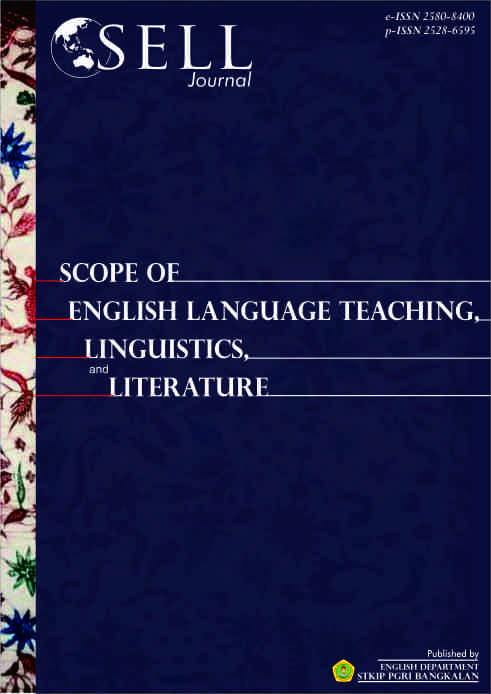The Effectiveness of BSW (Building A Scholar Writing) on Writing Skill
DOI:
https://doi.org/10.31597/sl.v10i1.1214Keywords:
BSW, Critical Writing, , Writing SkillAbstract
The goal of this investigation is to determine if BSW is an effective model for writing skills. When it was necessary to explain the writing material to the students, the BSW (Building Scholar Writing) model was selected. Unlike qualitative studies in which BSW works as a theory, the study employed quantitative, experimental, pre- and post-test method, among others, using SPSS (statistical package for social sciences) for the analysis. The school used for the research was the Eighteen students from the Eleventh Grade IPA at MA AN- Namirah as the respondents. There was a test which formed part of the quantitative data collection and research, this was a one group Pre-test and Post-test experimental design. The participants were subjected to a test prior to being enrolled, and then again after completion of the course. In this situation, the focus is on analyzing the data from the pre-test and post-test videos. The mean score in the post test was significantly lower than that in the pretest. There was a noticeable increase in writing skills after practice using BSW technique, which the students adopted.
References
Ataç, B. A. (2015). From Descriptive to Critical Writing: A Study on the Effectiveness of Advanced Reading and Writing Instruction. Procedia - Social and Behavioral Sciences, 199, 620–626. https://doi.org/10.1016/j.sbspro.2015.07.588
Bailey, A., Zanchetta, M., Velasco, D., Pon, G., & Hassan, A. (2015). Building a scholar in writing (BSW): A model for developing students’ critical writing skills. Nurse Education in Practice, 15(6), 524–529. https://doi.org/10.1016/j.nepr.2015.07.008
Devana, T., & Afifah, N. (2021). Building a Scholar in Writing: Model for developing student’s critical writing skill. 513(1), 358–363.
Dwigustini, R., Sari, N., Susilawati, S., & Nisa, B. (2021). Fostering Students’ Writing Skill By the Integration of Mall Application. Journal of Languages and Language Teaching, 9(1), 34. https://doi.org/10.33394/jollt.v9i1.3264
Graham, S., MacArthur, C. A., & Hebert, M. (2019). Graham, Steve, and Karen R. Harris. “Evidence-based practices in writing.” In Angewandte Chemie International Edition, 6(11), 951–952. (Vol. 2).
Herdi, H. (2000). an Analysis on Factors Influencing the Students ’. Journal of Lancang Kuning, 14(2), 19–22.
Meisuri, E. S. R. A. (2013). Improving Students’ Achievement in Writing Descriptive Text Through Questioning Technique. REGISTER Journal of English Language Teaching of FBS-Unimed, 2(4), 30–43. https://doi.org/10.24114/reg.v2i4.682
Shannon, S. L. (n.d.). a Guide To Academic and Scholarly Writing.
Wati, R., Susanti, R., Mahaputri, D. S., & Taslim, F. (2024). THE CORRELATION BETWEEN CRITICAL THINKING AND WRITING ABILITY AMONG ENGLISH DEPARTMENT. 9(2), 231–239.
Downloads
Published
How to Cite
Issue
Section
License
1. Copyright of this journal is possession of Editorial Board and Journal Manager, by the knowledge of author, whilst the moral right of the publication belongs to the author.
2. Legal formal aspect of journal publication accessibility refers to Creative Commons Atribution-ShareAlike (CC BY-SA), implies that this license lets others remix, adapt, and build upon your work even for commercial purposes, as long as they credit you and license their new creations under the identical terms. This license is often compared to “copyleft” free and open source software licenses.
3. Every publications (printed/electronic) are open access for educational purposes, research, and library. Other that the aims mentioned above, editorial board is not responsible for copyright violation















